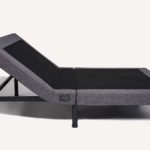Before you purchase a house it’s advisable to have several surveys done. One of these will tell you if you live in a flood-prone area or not. Of course, considering the way the environment is changing, it is possible that your existing house has moved into a flood area.
One thing is certain, the amount of flooding in the country is increasing, and you need to know how to prepare and protect your home from the floods.
It’s also advisable to make sure your house insurance covers flood damage. This will help you if the worst does happen. Don’t forget to get involved in local community fundraising projects, you never know when you’ll need their support to survive an ordeal, flooding or otherwise.
Doors & Windows First
The first step is to check all doors and windows. They need to shut properly, without any gaps that have the potential to let water in. Alongside this, check for any other gaps in your property that could allow water in. Seal all gaps using a gap filler or another appropriate substance.
Check Gutters
Flooding isn’t just caused by a rush of surface water. It can also be due to overflowing gutters. This allows excess water to pour down the walls of your home, potentially penetrating the walls or the foundations.
Simply checking the gutters and keeping them clear can eliminate this risk.
While you’re doing this you should check the drainage of your land and ensure all water is directed away from your home, not toward it.
Have Sand Bags Ready
Sandbags are very effective at redirecting water and offer a final level of protection when the weather is really bad. Keep several handy and use them to redirect the main force of water. This will reduce the strain on your property and decrease the likelihood of the water getting in.
You’ll want to position the sandbags in the same way as you would a wall, overlapping each other. It increases their strength and ability to redirect water. Just make sure the water is being directed away from your property.
Fit A Pump
When being prepared it’s worth looking at your home and envisioning where the water would go if it got in. In most cases this would be the basement, assuming you have one. It’s fairly easy to create a pit in the basement and put a pump into it.
The pump will activate automatically when water is detected and pump the water out and away from your property.
Change Your Floor
Carpets will instantly be ruined in a flood. But, there are other types of flooring, such as concrete, epoxy, and even tiles that can survive the flood. This will reduce the damage and repair bill for your home.
Alongside this, you should make sure nothing of sentimental value exists on the ground floor where it could be damaged by floods. Elevate these items or keep them on a higher floor.
Don’t forget to have a quick response plan for when the flooding is very bad.
Related Posts












